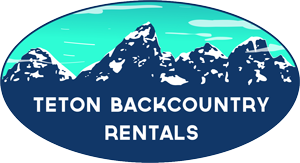Want to plan a backpacking trip in your favorite National Park? Here’s 6 things you need to consider before your trip.
Backpacking in our country’s national parks is one of the best ways to beat the crowds and have a true adventure. Once you make it off the beaten path, and get away from the folks who enjoy 20 min walks from the car, you can really start to explore. You can find pristine alpine lakes, rugged summits, and some of the most beautiful camping spots imaginable. Depending on who you are and where you are reading this from, you could be imagining a one night family outing in Yosemite, or a fast and light trip into the Tetons to conquer some of the higher peaks. No matter which end of the spectrum your interests lie, there are a few things you’ll need to know before you head out into the wilderness with fat pack and a pocket-full of beef jerky.
1) Park Trail Conditions
It’s finally July, but that doesn’t mean you can expect every trail to be dry and free of snow. Here in the Tetons we still have a good amount of snow above 9,000 feet, and parties should be prepared with ice axes and crampons if they plan on crossing any high elevation divides. Usually the park rangers can share specific information on snow line and trail conditions.
2) Physical Fitness
You might be in the best shape of your life and have a very ambitious route planned for your party’s backpacking trip, but what is the fitness level of the weakest person in the group? Having a realistic understanding of what the group can handle will keep everybody enjoying the trip, and most importantly it will keep your group safe. Being too ambitious and attempting routes that are beyond a group’s ability is a recipe for some unhappy campers, and a potentially dangerous situation. Gauge your group’s fitness level, and plan an appropriate trip accordingly. Remember, everyone is going to have quite a bit of weight on their backs!
3) Gear
Does everyone in your party have the necessary gear they need for a few days in the backcountry? Does everyone have sturdy shoes that do not cause blisters? An approach shoe or a sturdy mountain boot will work best, and being prepared with moleskin and other first aid is always recommended. Are you flying or driving to your destination? It might make sense to leave some of the bulk at home and rent locally. Renting is a great idea for people who are new to backpacking and not looking to make the large initial investment for gear. For example, if you’re planning a trip to Grand Teton or Yellowstone National Park, Teton Backcountry Rentals can provide everything your party will need for a successful backpacking trip. They make it so you don’t need to travel with tents or stoves, and they even deliver the gear to you!
4) Permitting
Most national parks require backcountry camping permits, and unless you reserve the permit months ahead of time, you are usually stuck fighting for a first-come-first-serve permit. Most national parks issue these no more than 24 hours before the intended start date, so make a plan, and get to the ranger station right when it opens the day before your trip to secure your permit.
5) Weather
Weather is fickle in the mountains. In the Rockies, you can expect clear mornings and afternoon thunderstorms. Plan accordingly, leave early, and keep an eye on the weather as the day progresses. It always makes sense to take a look at multiple different weather prediction services. Pay special attention to the specific elevation of the forecast you are looking at. People will often come to the Tetons, look at the weather forecast for the town of Jackson, and then be confused when they are getting dumped on at 9,000 feet in the mountains. Using NOAA you can refine your forecast area by moving the pin on the map to exactly where you will be hiking. It also makes sense to cross reference with a local weather service. In the Tetons, Mountain Weather is a great resource.
6) Bear Country
Is your planned trip in bear country? Here in the Tetons, we have black bears and grizzly bears. Making noise on the trails, travelling in groups of two or more, and proper food storage greatly reduce your risks of a bear encounter. If you’re hiking in bear country It’s always a good idea to be carrying bear spray!
Most importantly, make a plan, and do your research. Backpacking in our country’s national parks is an amazing experience!
Author: Patrick Collins.
Patrick lives in Jackson, WY, is the founder of Teton Backcountry Rentals, and thrives on splitboarding and climbing in the Tetons!
